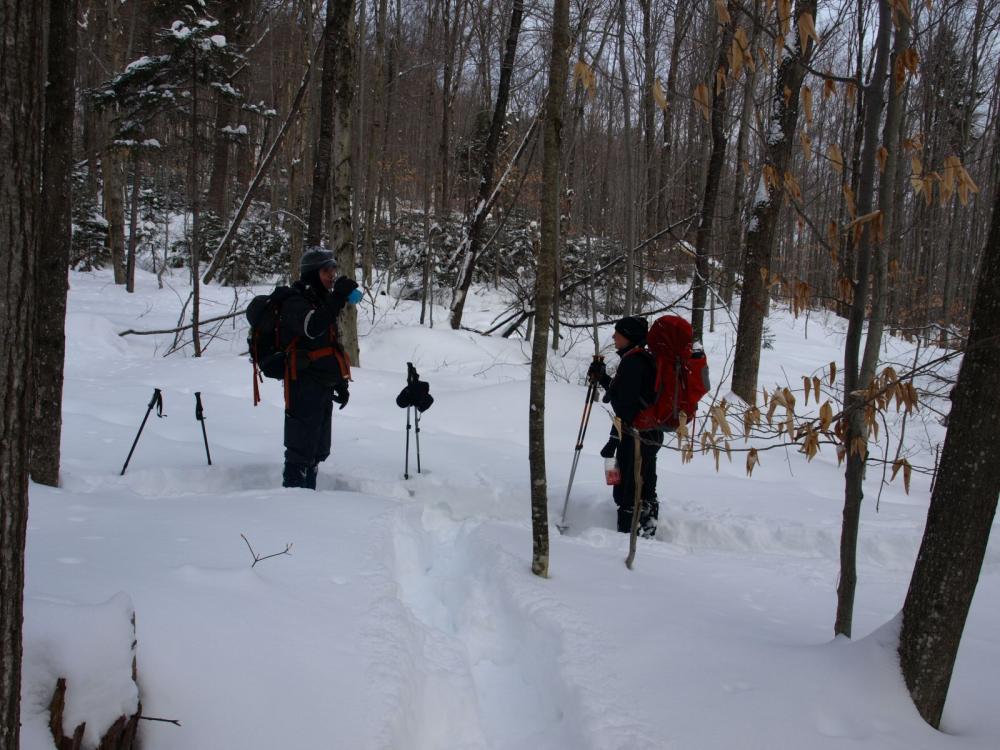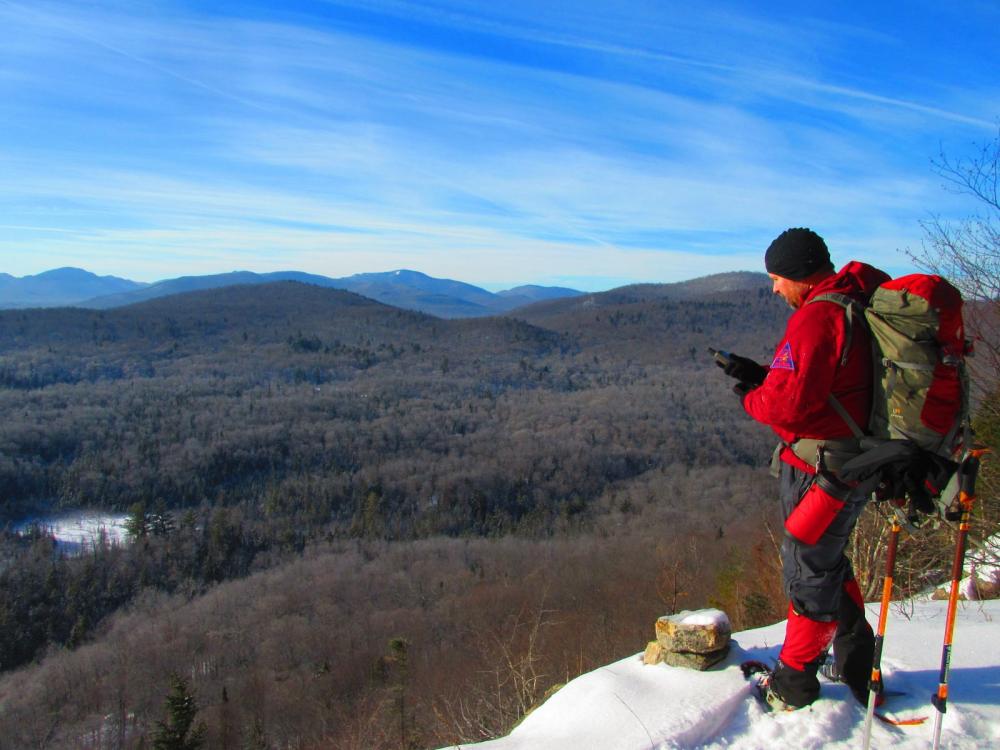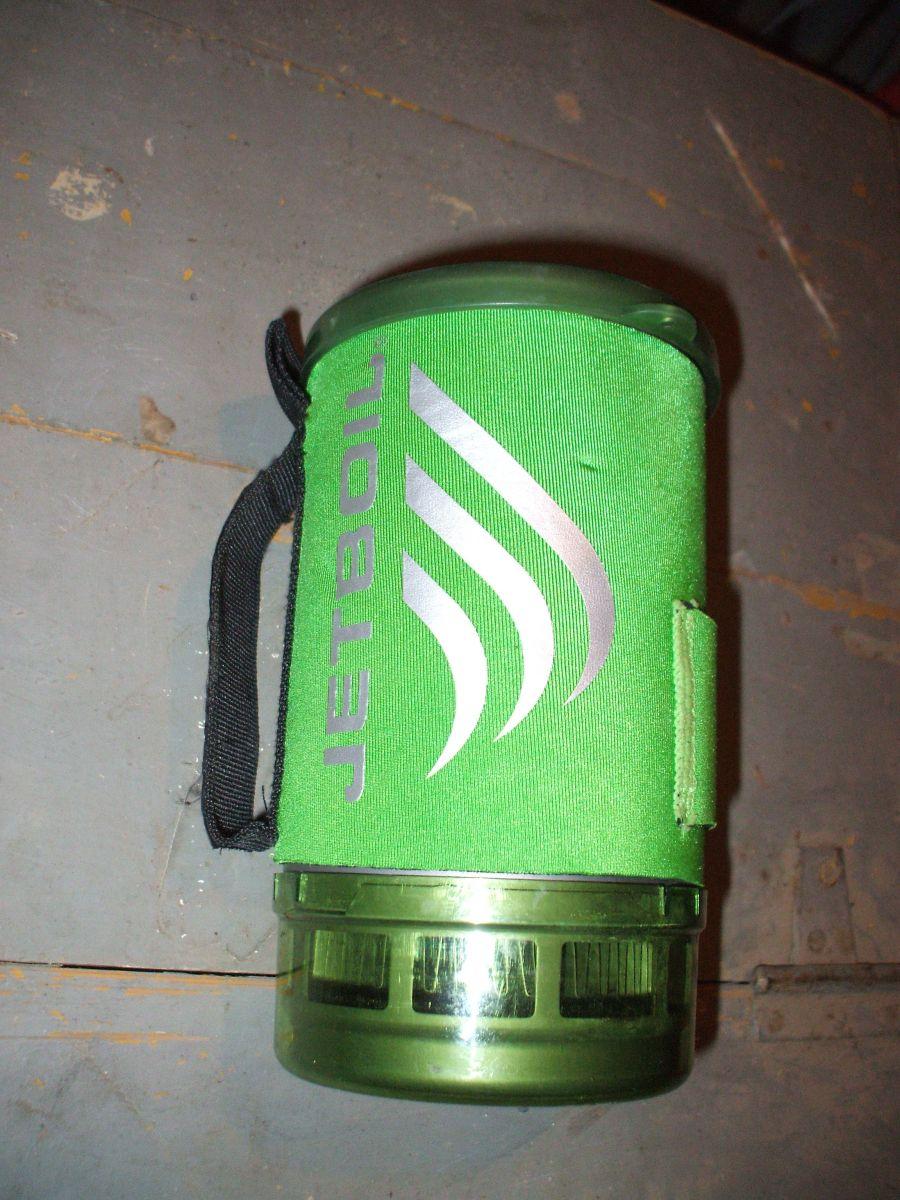Two things to remember about winter exploring...
As you may know there are many, many, many things to learn and remember before heading out into the High Peaks on a winter trip. Whether you are bagging a peak, skiing to a secluded pond, ice climbing your favorite pitch, or heading to the Lake Placid region for a three-day camping excursion with your college buddies, you have to think about two important key factors: hypothermia and dehydration.
Hypothermia
Hypothermia is "a decrease in the core body temperature to a level at which normal muscular and cerebral functions are impaired." There are several things that can lead up to hypothermia such as cold temperatures, improper clothing, getting wet, exhaustion, dehydration, lack of food, and drinking alcohol. The fact is anything less than 98.6 degrees could potentially be linked to hypothermia, but the colder it gets the higher the potential and acceleration of that potential.

As outdoor enthusiasts we are susceptible to hypothermia all year round, through all forms of cold temperature transfer such as:
• Evaporation, when the sweat on our body cools
• Conduction, being in contact with the cold element
• Convection, cold wind above tree line
• Radiation, cold air temperature differences
Prevention has a lot to do with your preparation and knowledge of hypothermia and the signs of an onset. Watch for the “umbles” is what I was always taught, stumbles, mumbles, fumbles, and grumbles which show changes in motor coordination and levels of consciousness and awareness. Shivering will become involuntary and the ability to do some activities will be limited, but the victim may still be able to walk.
There are a few factors in susceptibility to hypothermia that in many cases you might not have control over. A thinner person is more apt to get cold and lose core body temperature faster than a bigger person due to a lack of natural insulation from fat. A person living in cold temperate climates like Alaska are more apt to be able to withstand colder temperatures than a person living in Hawaii, due to that person’s body regulations. Proper layering is the one you have the most control over and should not be ignored or skimped on. See my previous blogs on layering basics, layering the core and layering the head for more in depth information.
Dehydration
Dehydration is the loss of too much fluid from your body, this does not only occur during the hot days of summer but even on the coldest days of winter. During the winter months it is very easy to become dehydrated and not even realize it. You will have a tendency to not drink as much as you should because cold weather suppresses thirst, reducing the want to drink (I know, I feel it too). There are certain factors that affect dehydration in winter, some of which I bet you'd never even think about. Here are a few examples: cold dry air, wind chill, inadequate fluid intake, sweating, and even shivering all contribute to dehydration during outdoor winter sports.

The human body needs water to maintain normal functions. Your body loses fluids with urination, vomiting, diarrhea, fever, sweat, overexertion, and even breathing. Dehydration interferes with the core (inner) temperature of the body, which is where the higher possibility of hypothermia comes in to play, then the deterioration of physical performance and the failure of your mental presentation.
Before beginning any outdoor sports, make sure you have easy access to fluid to keep well hydrated, and even get extra hydration before you start. If you stay hydrated all the time, even in your daily routine, it will help you when you need it the most. Just as in warm weather, your body loses electrolytes (filled with salt and potassium), so you will perform best by utilizing sports drinks in addition to water. Sports drinks or sport drink additives for water also help to delay the freezing process of your water. In the winter, be careful not to gulp large quantities of fluid at once, as this could chill you. It is best to take small sips frequently. Also, your body works harder to warm cold fluids, which burns more calories, requiring you to eat more to stay energized. Start your winter outing with warm water drinks in your bottle, it will cool quickly enough, but you will have the advantage of not drinking only cold fluids all day.

Monitor the quantity and color of your urine. If you don’t need to empty your bladder for several hours it’s a sure sign you are running low on liquid. When you do “go” make sure that it’s light yellow to clear; a strong yellow color is one of the best indicators of a need for better hydration. At the onset of thirst, an individual will already be partially dehydrated so don’t wait until you’re thirsty.
Water freezing issues
Keep you water from freezing and help the cause to stay hydrated. To keep your water from freezing in the winter there are a couple tricks. Stay away from bladders if at all possible. While yes, there are tricks to keep them from freezing, they are not foolproof. Wide mouth water bottles are the best. Use a water bottle parka (insulator) to help slow the process and even put a hand warmer in the bottom of it to keep the temperature up. Store the water bottle upside down. The top of the water near the air always freezes first, just like a pond. The top of your water bottle is often in this position. So, if the bottom of the water bottle is the top then when you flip it over to take a drink the bottom is frozen and not the opening, always leaving you with fresh water to drink.

For more tricks of the winter trade, be sure to check back in often for insights on gear, outdoor injury protection, layering, food, recreation and more. For now, go out and enjoy a great dinner as you plan your next Adirondack outdoor adventure.






